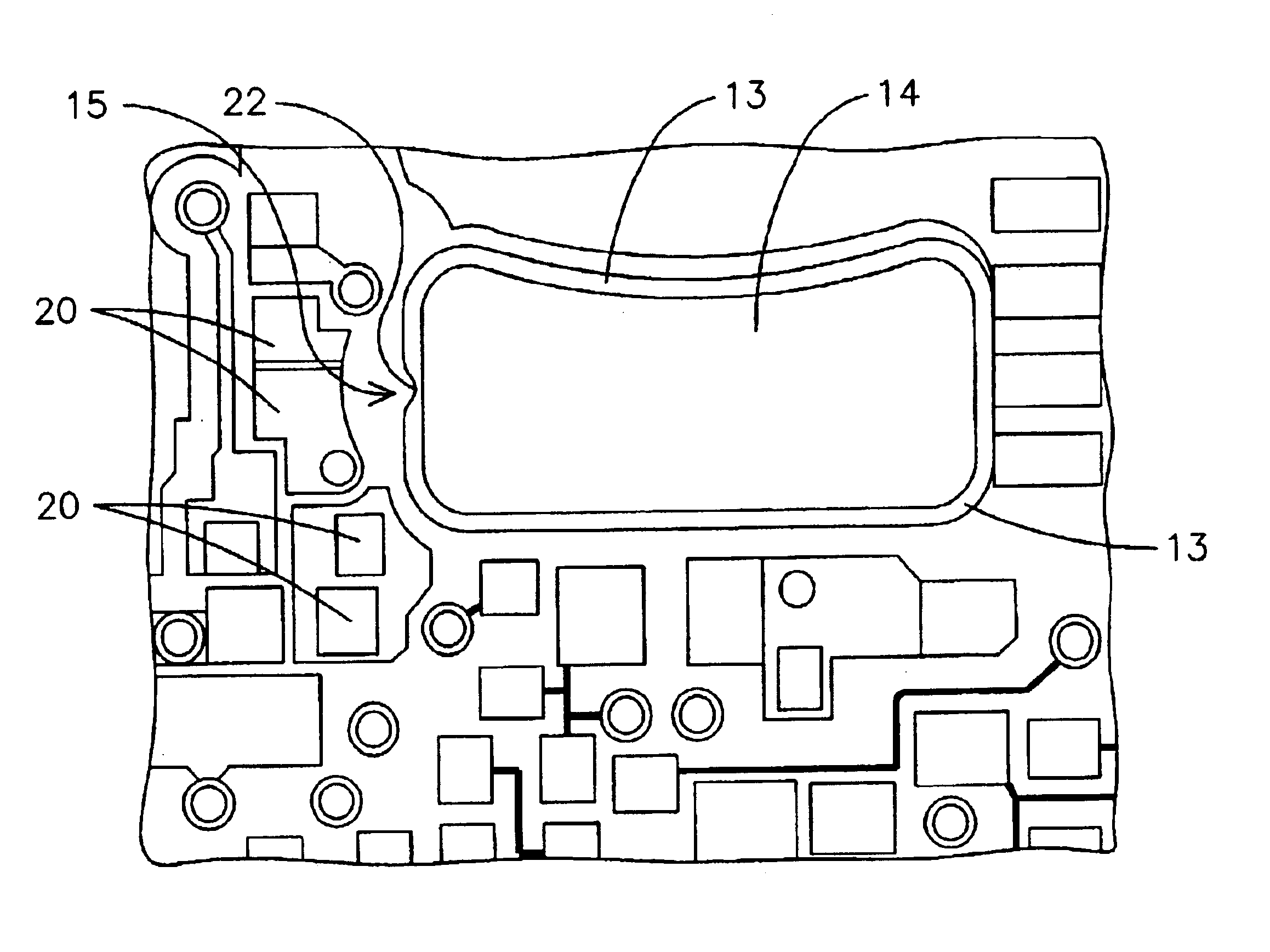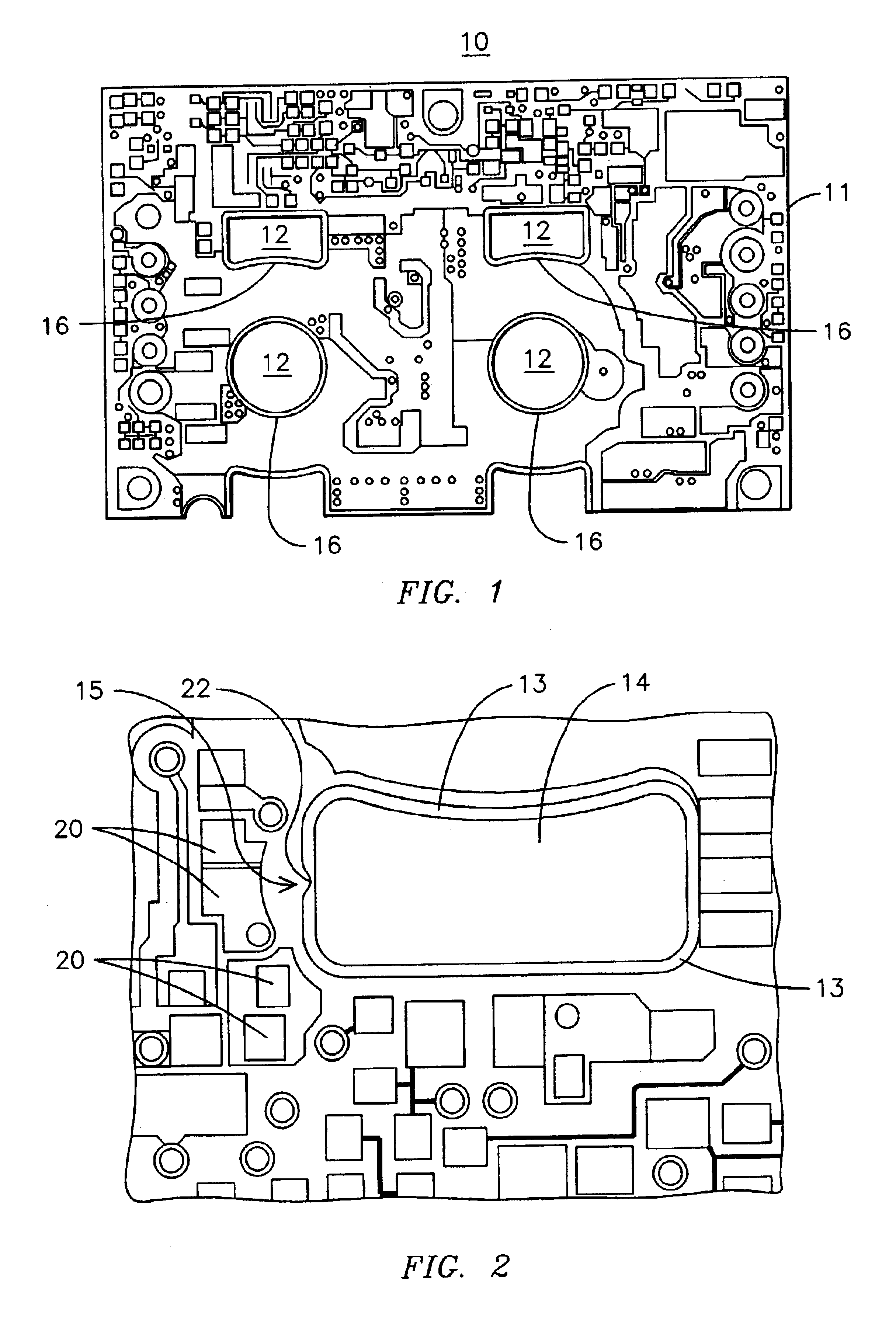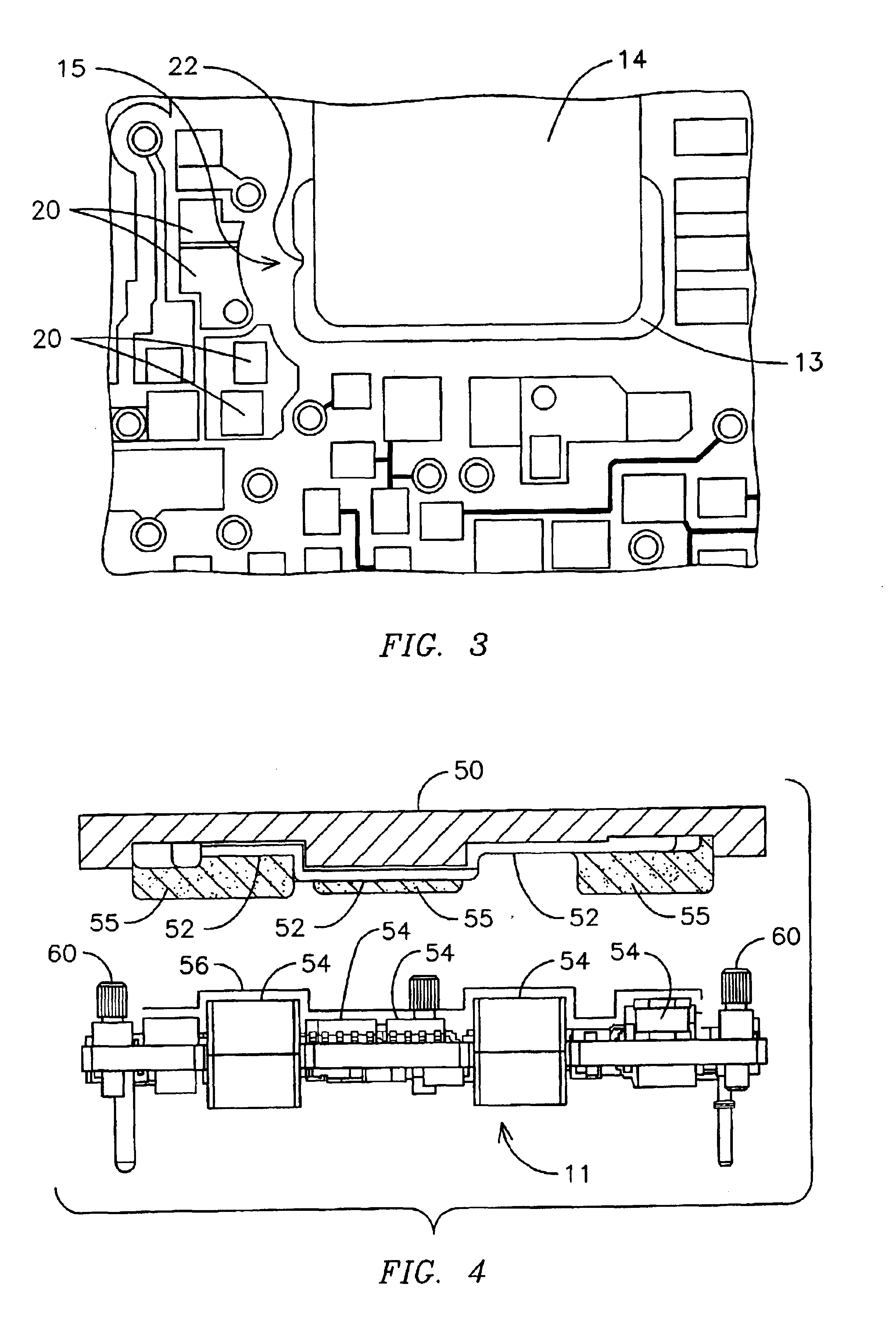Packaging techniques for a high-density power converter
a technology of high-density power converters and packaging techniques, which is applied in the direction of transformer/inductance magnetic cores, electrical apparatus construction details, and association of printed circuit non-printed electric components, can solve problems such as thermal performance constraints, and achieve the effects of enhancing the thermal capability of a power converter, ensuring the safety distance requirements of traces, and facilitating the transfer to the surrounding environmen
- Summary
- Abstract
- Description
- Claims
- Application Information
AI Technical Summary
Benefits of technology
Problems solved by technology
Method used
Image
Examples
Embodiment Construction
[0017]FIG. 1 illustrates an exemplary power converter 10 comprising a printed circuit board (PCB) 11 including one or more cutouts 12 configured to receive a portion of a magnetic core 14 (FIGS. 2 and 3) of a power transformer or inductor. The inventors of the present invention in one aspect thereof propose to configure an outside layer of the PCB, e.g., a metallized layer 16, as the power winding of the power transformer / inductor so that the heat generated by the windings can be more readily transferred to the surrounding environment.
[0018]In the event a transformer core is considered, since the power transformer comprises primary and secondary circuits, appropriate electrical isolation is required between each of these circuits as well as between the magnetic core relative to each of the circuits. In a practical implementation, the transformer core can be configured to be part of either the primary circuit or the secondary circuit, depending on the outside layer winding configurat...
PUM
| Property | Measurement | Unit |
|---|---|---|
| clearance distance | aaaaa | aaaaa |
| thermal performance | aaaaa | aaaaa |
| density | aaaaa | aaaaa |
Abstract
Description
Claims
Application Information
 Login to View More
Login to View More - R&D
- Intellectual Property
- Life Sciences
- Materials
- Tech Scout
- Unparalleled Data Quality
- Higher Quality Content
- 60% Fewer Hallucinations
Browse by: Latest US Patents, China's latest patents, Technical Efficacy Thesaurus, Application Domain, Technology Topic, Popular Technical Reports.
© 2025 PatSnap. All rights reserved.Legal|Privacy policy|Modern Slavery Act Transparency Statement|Sitemap|About US| Contact US: help@patsnap.com



